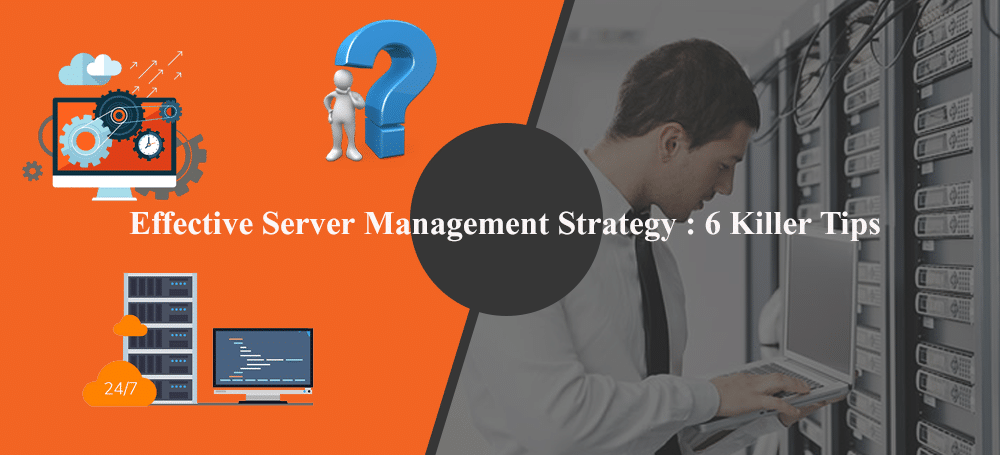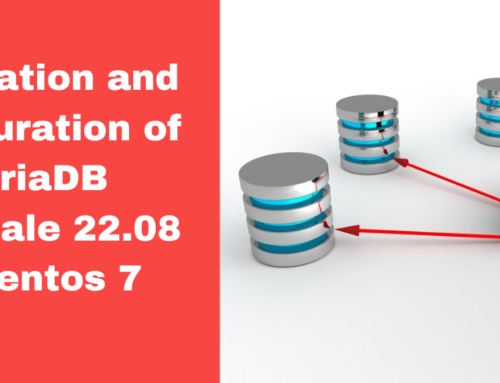Did you know if Facebook went down, it would lose $24,420 per minute?
According to a 2016 IHS report, information and communication technology downtime is costing American organizations more than $700 billion every year.
These numbers and countless instances very well edify the real significance of not only leveraging the most advanced server but also having an effective server management strategy in action behind the curtains. Because, like the rule goes, it’s technology; even the most advanced equipments can fall prey to flaws. So companies must imperatively keep check on their servers, update it regularly, and perform standard maintenance every once in a while to avoid any downtime and ensure smooth functioning of their business on the digital space.
Needless to say though, even when quite simple, effective server management can be quite tricky for many – the SMEs, in particular, who usually depend on DIY practices and avoid having any in-house expert. Their inefficiency really emerges from the misconception that having own data center is much convenient and affordable. (More on this later)
If you want your business to fly high, take care of your server like a baby. Here are 6 steps to a good server management strategy:
1. Regular monitoring is a key
Some people don’t take notice of anything wrong until the problem is evident and fatal. They keep on avoiding the small glitches that eventually end up damaging the hardware entirely. The easiest way to avoid this is regular monitoring.
Monitor your sever round the clock. Check if it is functioning properly. Identify the problem if you see one and then fix it immediately. This will also help you save expensive resources because most of the time, considered comatose, servers consume hog power and cooling energy unnecessarily without putting out any utility value. And this will definitely hurt your finance directly.
2. Keep the system up-to-date
This doesn’t need a genius to understand. Old hardware and software lags on every front when compared to their new counterparts. Made using lower-grade material and technology, they are slow and inefficient in their task.
On the other hand, the state-of-art facilities ace in every department. Updated with the latest technology to keep up with changing needs, requirements and challenges, they are much quick and proficient.
This means you must always keep your server in the latest phase. Update the programs on a regular basis to keep it running smoothly.
3. Hire experts for “efficient” maintenance work
Some companies don’t have any in-house expert. And rightly so, given the cost of employing a server management expert could be quite high. In such time, instead of depending on DIY steps and pure luck, it is best you hire a server management company from time to time.
Experienced and qualified, these specialists can provide you impeccable server maintenance service, keeping your facility running effortlessly and at its best.
4. Is it the time to make replacement?
If you’ve been using the server for quite some time now and it has been years since you made any upgrade, perhaps it’s time to make a complete replacement of the infrastructure. An aging system could be much costlier than investing in a new one.
A very evident sign if it’s really the time or not is the performance of your server. If it has been lagging behind lately, creating all sorts of problems, requiring more (and costlier) maintenance than normal, you know it’s time to replace the system.
However, the decision itself isn’t easy and requires a lot of planning. You must first decide on the type of server you now require, the kind of drive you should invest in, and so forth. Plus, migrating from old system to the new one can also lead to downtime; you must work this out efficiently to keep any disruption at the minimal.
5. Move to a collocation facility
If your business has grown from being a small entity to a complete mammoth, the server capacity you would need now would be large. You would also need the best system out there. In such cases, it is always a good idea to move to a collocation facility that has dedicated infrastructure to handle your business server specific needs. This is an economical option and something many top companies do.
Of course, where you move your facility, the location, depends on a host of factors. And that you must think things through to avoid any future interruptions. Setting up an infrastructure in developing countries like India is much more cost-effective; but there could be plenty of challenges if you’re careless, like power outages and lack of management skills. So know all your pros and cons, consult an expert if needed, before moving to a collocation facility.
6. Contact server management company
Mentioned already – the idea that maintaining in-house data center is conveninent is nothing but a misconception. If anything, it’s much more hassle and costlier. Plus, it might take away your management’s lot of time and effort which would have otherwise invested in the core operation of the business.
The best option – at least for the small and medium-scale companies – is to have a server management company by their side. Today, many good names have emerged on the scene that is offering high quality services and world-class customer support. With their out-and-out, cutting-edge infrastructure, they can guarantee you higher uptime, plus greater security, which is something very important these days. So instead of having your own data center or investing in collocation facility, it is always recommended to contact a good server management company. Much more professional and experienced, you can bet that they know more about server management strategy than anyone.
These are 6 simple steps to manage your server the right way—6 tips on how to manage your server effectively. Of course, things are easier said than done. Implementing these into actions would be challenging (and even nerve-wrecking if your business critically depends on server). But once the initial challenges are crossed over, the path ahead for your business would be smoother and brighter.







